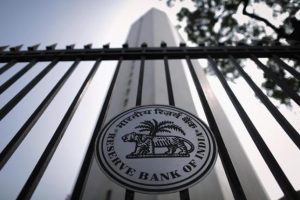
Janjivan Bureau
MUMBAI: Bihar election in full swing, the Reserve Bank of India (RBI) cut its policy interest rate to a 4-1/2 year low of 6.75 percent on Tuesday, in a bigger-than-expected move that, with inflation running at record lows, could help an economy in danger of slowing down. Political observer are expecting that BJP will gain in Bihar election.
The RBI had previously cut interest rates three times this year, lowering it by 25 basis points each time.
The RBI justified the bigger reduction, saying consumer inflation was likely be running at 5.8 percent, below the 6 percent target for January, thanks partly to the government’s efforts to contain food prices.
At the same time the central bank cut its economic growth forecast to only 7.4 percent in the fiscal year ending in March 2016, lower than its previous 7.6 percent projection.
The RBI also drew comfort from U.S. Federal Reserve delaying the first hike in U.S. interest rates in nearly a decade, according to a statement written by Governor Raghuram Rajan. Once U.S. rates rise, analysts expect some emerging market currencies to come under pressure.
“Monetary policy action has to be accommodative to the extent possible, given its inflation goals, while recognizing that continuing policy implementation, structural reforms and corporate actions leading to higher productivity will be the primary impetus for sustainable growth” the RBI said.
The benchmark 10-year bond fell 9 basis points to 7.64 percent after the news. Share indexes edged higher.
An interest rate cut had been widely expected after India reported consumer inflation had fallen to a record low of 3.66 percent in August, and there have been calls from within government and industry for the RBI to lower borrowing costs.
Still, it is unusual for the RBI to lower interest rates in September, as it has tended to be on the defensive against food price pressures during the monsoon season running from mid-June through September, after enduring several years of weak rains.
Since adopting the repo rate as its main policy tool in 2004, the central bank had never cut rates during this period.
This is also the biggest single monetary policy move taken by Rajan and it takes the repo to its lowest since March 2011. Since taking the helm of the central bank in September 2013, Rajan has raised the repo rate three times and lowered it three times, all by a magnitude of 25 bps.
Calls for lower rates first began to grow louder after the release of data showing the economy grew by a slower-than-expected annualised rate of 7 percent in the April-June quarter – faster than China, but well below the government’s target of 8 to 8.5 percent for the year ending in March.
Before Bihar election RBI cuts Repo Rate by 50 bps
ADVERTISEMENT

















